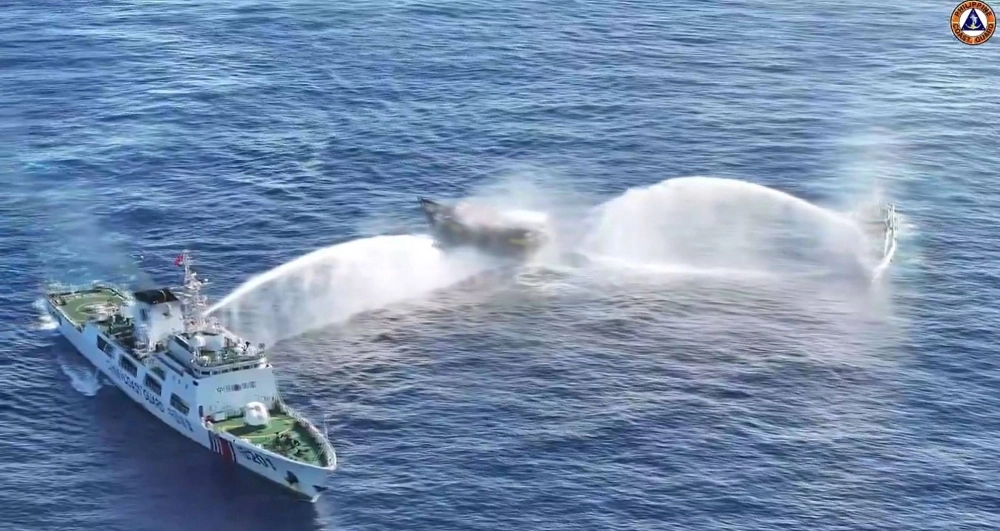While attention has been focused on rising tensions in the Taiwan Strait, the real tinderbox in Southeast Asia is Second Thomas Shoal, a spit of sand and coral claimed by both the Philippines and China.
The two countries’ maritime forces — a broad term that here includes gray-hull navy vessels, white-hull coast guards and militias — are engaged in increasingly dangerous confrontations that not only threaten direct conflict but could also ensnare the United States and Japan. That is no reason to back down, but we must be clear eyed about the stakes and the potential consequences.
The Philippine government claims Second Thomas Shoal (Ayungin to the Philippines or Ren’ai Jiao for the Chinese), some 200 kilometers from its country’s coast, as part of its continental shelf. China counters that its use of the entire South China Sea — and thus its sovereignty over the water and the islands within it — goes back two millennia and the Beijing government has codified that claim in maps since 1947 and laws dating from 1958.

















With your current subscription plan you can comment on stories. However, before writing your first comment, please create a display name in the Profile section of your subscriber account page.